Few places in Europe are defined by their modern history quite like Bosnia and Herzegovina. Even though the conflict in the country ended over 20 years ago, it’s only in recent years that its capital city, Sarajevo,has really started to see tourists return. Those who do visit Sarajevo are in for a real treat, as this city is not only historic, but also culturally interesting and quite beautiful. If the idea of spending two days in Sarajevo has tapped into your wanderlust, you’ll want to read our Sarajevo itinerary to see all the best things to do in Sarajevo.
Best Time to Visit Sarajevo
Unlike with some other European destinations, the best time to visit Sarajevo is rather obvious, because there’s not much complexity in the city’s weather. For the best sightseeing weather, it’s best to visit Sarajevo between May and September. When planning your trip, also take into account the best times to visit other stops in Bosnia and Herzegovina or elsewhere in the Balkans.
Because it’s surrounded by mountains, Sarajevo can get seriously cold and experiences long winters. Expect the city to be pretty chilly from November through April. Even in the summer, the city doesn’t get that hot.
Sarajevo is not yet heaving under the weight of mass tourism, so there’s no real need to avoid it in summer. If you’re really worried about crowds, focus on the shoulder months of May and September.
How to Get Around Sarajevo
Sarajevo closely follows the Miljacka River, so it has a long shape, the newer part of the city stretching westward from the Old Town. With the odd exception, most places you’ll want to visit in Sarajevo are within walking distance of the Old Town.
When visiting Sarajevo, you’ll likely arrive by plane, bus, or train. Other than taking a taxi, your best option for getting from Sarajevo International Airport into the city is to take the airport bus for the price of 5 convertible marks, or KM (about $2.81).
Sarajevo only has train connections with other major cities in Bosnia and Herzegovina, such as the southern city of Mostar. For all other overland transport, you’ll be coming by bus into the station just down from the train station. Both are several kilometers from the city center.
For most of your 48 hours in Sarajevo, you’ll be walking around and near the city’s historic center. If needed, you can get around the wider city on trams, buses, and trolley buses. You can buy single-trip tickets for each at kiosks or from drivers on board for 1.6 KM and 1.8 KM, respectively. Multi-trip tickets are available for the trams.
Where to Stay in Sarajevo
There aren’t many challenges in figuring out where to stay in Sarajevo. Because of the city’s layout and centrally located attractions, the best part to stay in is quite clear. Ideally, you want to find a place in or near the city’s Ottoman Old Town, as that’s where you’ll spend much of your time.
Don’t rule out the far bank of the Miljacka, though, as crossing the river is easy and could make a nice start to your day. Best of all, accommodation in Sarajevo is much cheaper than in other European capital cities, allowing you to save money or even treat yourself to something nicer than usual.
One of the best places to stay in Sarajevo is Hotel Europe, which is both traditional and luxurious. Sitting right in the Old Town, this five-star hotel offers spacious rooms and features a wellness center with Turkish baths, saunas, and other personal treatments.
Thanks to the affordability of Sarajevo, even a hotel as nice as Hotel VIP is a great midrange option. With big rooms, plenty of amenities, and a tasty free breakfast, this hotel is a fantastic value for the price.
Don’t forget to look at Airbnb as well. For recommendations, check out our list of the best Airbnbs in Sarajevo.
Sarajevo also offers ideal lodgings for backpackers and budget travelers, such as Balkan Han Hostel. A handy location, a lovely garden that doubles as an outdoor cinema, and helpful staff make this an easy choice for travelers on a strict budget. If you need more ideas, check out our guide to Sarajevo’s best hostels.
For more accommodation options in Sarajevo, check out Booking.com. This site consistently offers the best rates, and its customer service is on point.
The Perfect 2-Day Sarajevo Itinerary
Even though it’s the capital of Bosnia and Herzegovina and a fairly large European city, you don’t need too long to explore the best places to visit in Sarajevo comfortably. To guide you through the best of Sarajevo, we’ll first take you through all the sights of the Ottoman Old Town. From there, it’s about digging into Sarajevo’s tragic history, but also finding its most curious and beautiful spots along the way.
However, before we get to our Sarajevo itinerary, we just wanted to remind you to purchase travel insurance. You never know what will happen and, trust us, you do not want to get stuck with thousands of dollars in medical bills. As a wise man once said, “If you can’t afford travel insurance, you can’t afford to travel.” So don’t leave home without it.
SafetyWing offers travel insurance for only about $10 a week, making it a no-brainer to get. You can get a quick, non-binding quote below:

SafetyWing is, of course, not the only option available. Two other popular alternatives are World Nomads and Heymondo.
Now that you’re covered should the worst happen, let’s get to the fun part of our Sarajevo travel itinerary. With this guide, working out what to do in Sarajevo in two days should be a breeze.
Sarajevo Itinerary: Day 1
Starting your weekend in Sarajevo off right, your first day is all about exploring the wonderful Stari Grad (Old Town). This area will give you a sense of the deep history and captivating culture of Sarajevo and its country.
Sebilj Fountain
The Sebilj, a wooden fountain sitting proudly in the old bazaar, is probably the city’s most photographed and iconic landmark. Built in 1753, the fountain has an ornate Ottoman design and provides a real sense of place amongst the historic buildings of the Old Town.
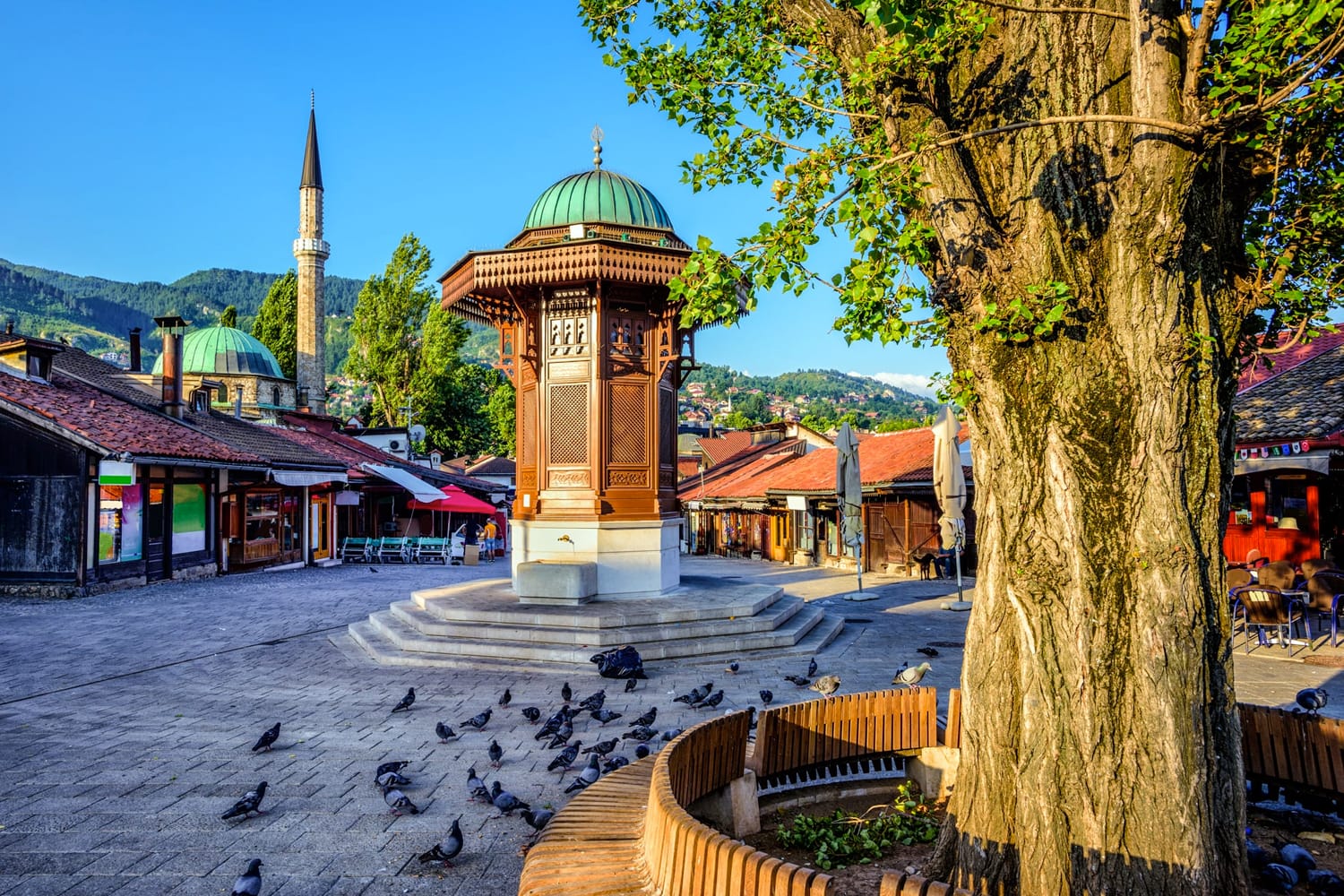
Old Town Bazaar
From the Sebilj, it only makes sense to explore the surrounding Baščaršija, Sarajevo’s Ottoman bazaar. Dating back to the Middle Ages, the streets of this marketplace have long been a place for craftspeople to trade their wares. Walking around it today, you’ll find stores selling metalwork, jewelry, and clothes, along with various restaurants and cafes.
You can also find other historic landmarks in the bazaar. First is the Baščaršija Mosque, whose minaret you’ll probably see poking above the bazaar’s rooftops. Built sometime before the 16th century, the mosque features a stunning courtyard and is considered a national monument. Another historic building worth visiting is Morića Han, a caravanserai (or inn) dating back to the 16th century.
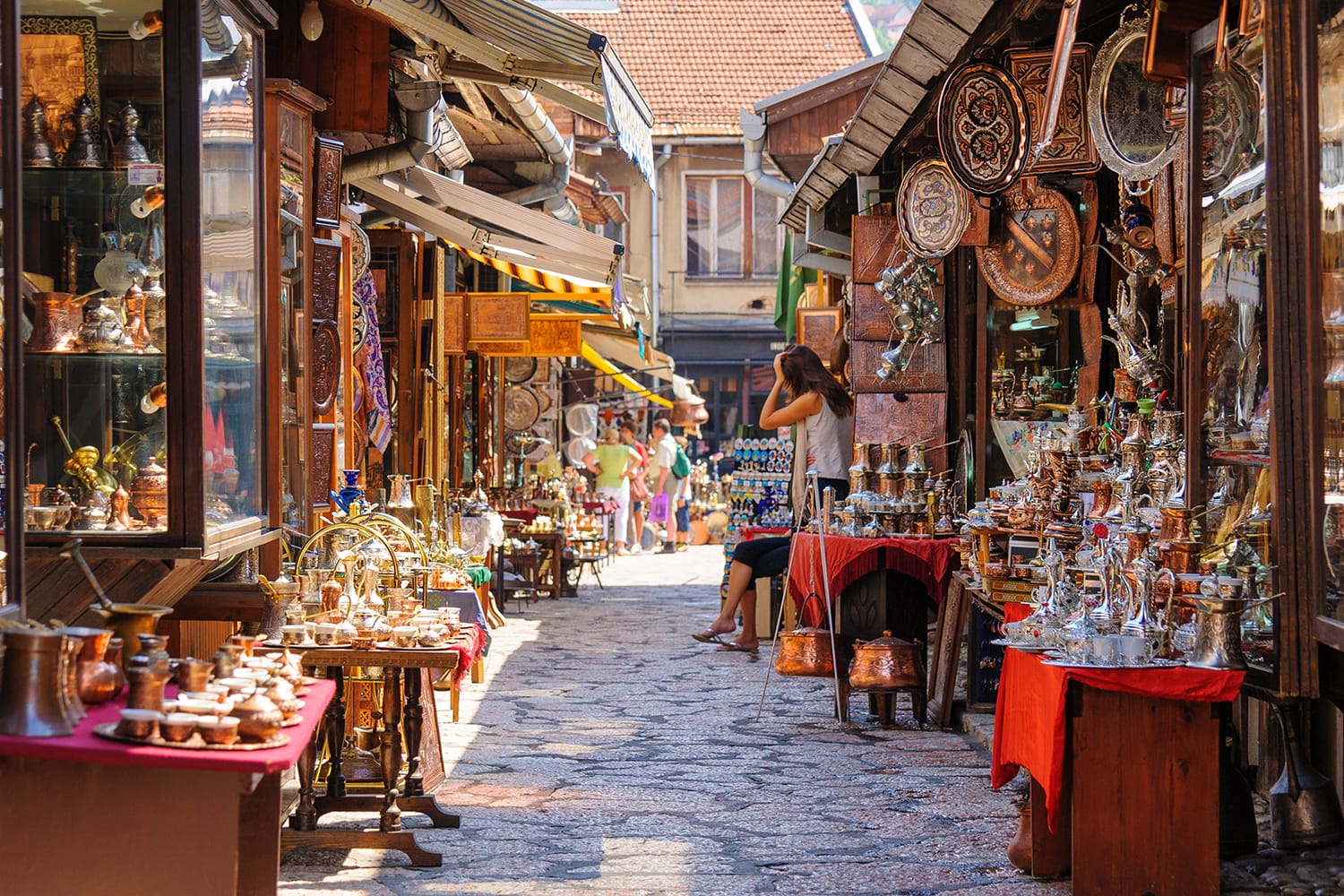
Gazi Husrev-beg Mosque
Perhaps the most impressive landmark in the Old Town is the Gazi Husrev-beg Mosque,built in 1532. It’s not only a major tourist site, but actually the largest mosque in Bosnia and Herzegovina and an important center for the country’s Islamic community. What brings tourists to this mosque is its elegant Ottoman architecture and dramatic presence. While you are welcome to visit inside, it is a house of worship, so dress respectfully.
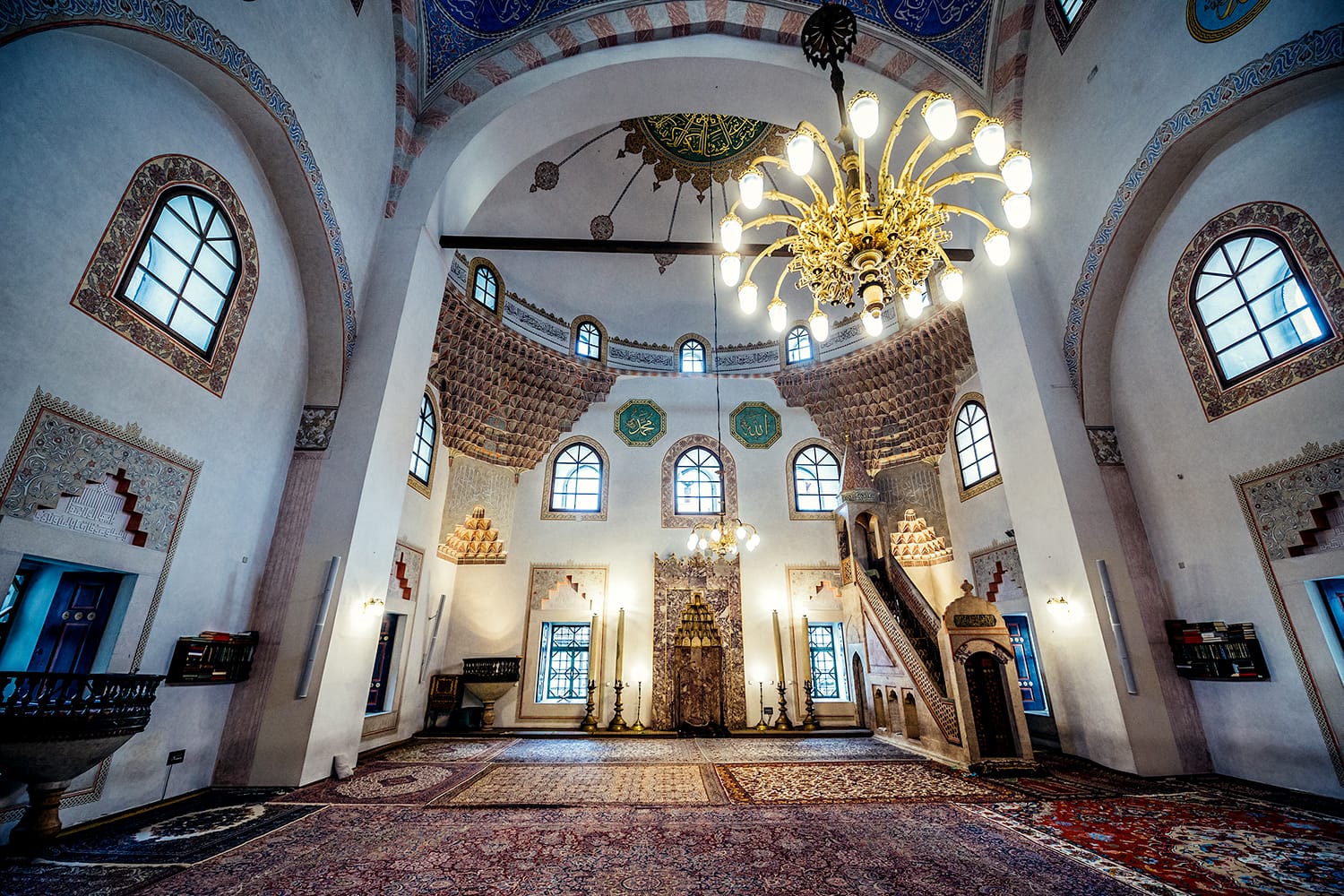
Old Bezistan Covered Market
In the old Ottoman bazaar, not all of the stores and stalls were on the city streets. You can still find some within the covered market known as the Old Bezistan. While metalworkers and jewelers operated outdoors, those who made and sold textiles called this indoor market home for centuries. You can walk through this great stone structure, browsing all sorts of souvenir shops along the way.
Off along the outside of the Old Bezistan, you’ll find the open-air ruins of Tašlihan. Like Morića Han, this was an Ottoman caravanserai from the 16th century, but only its foundations remain.
Miljacka Riverfront and Latin Bridge
Back outside, stroll along the scenic riverfront of the Miljacka, which runs through the city. Even with the sound of old trams clacking along in the background, this is quite a relaxing walk. Thanks to the many bridges linking the two sides of the river, you can easily cross back and forth, continuously seeking out the best views.
Besides the scenery, you can see some major city landmarks on the banks of the Miljacka. Look out for impressive buildings such as the Sarajevo Academy of Fine Arts, Vijećnica (Sarajevo City Hall), and the Inat Kuća (House of Spite), an Ottoman house with a fraught political history that now serves as a traditional Bosnian restaurant.
However, the spot that most tourists visit is the Latin Bridge. It may not look like anything special, but it was by this bridge that the Austrian Archduke Franz Ferdinand was assassinated in 1914, starting the events that would spark World War I. On the north end of the bridge, you can see a plaque marking the fateful spot and visit the Museum of Sarajevo 1878-1918, which delves into Bosnia and Herzegovina’s period of Austro-Hungarian rule.
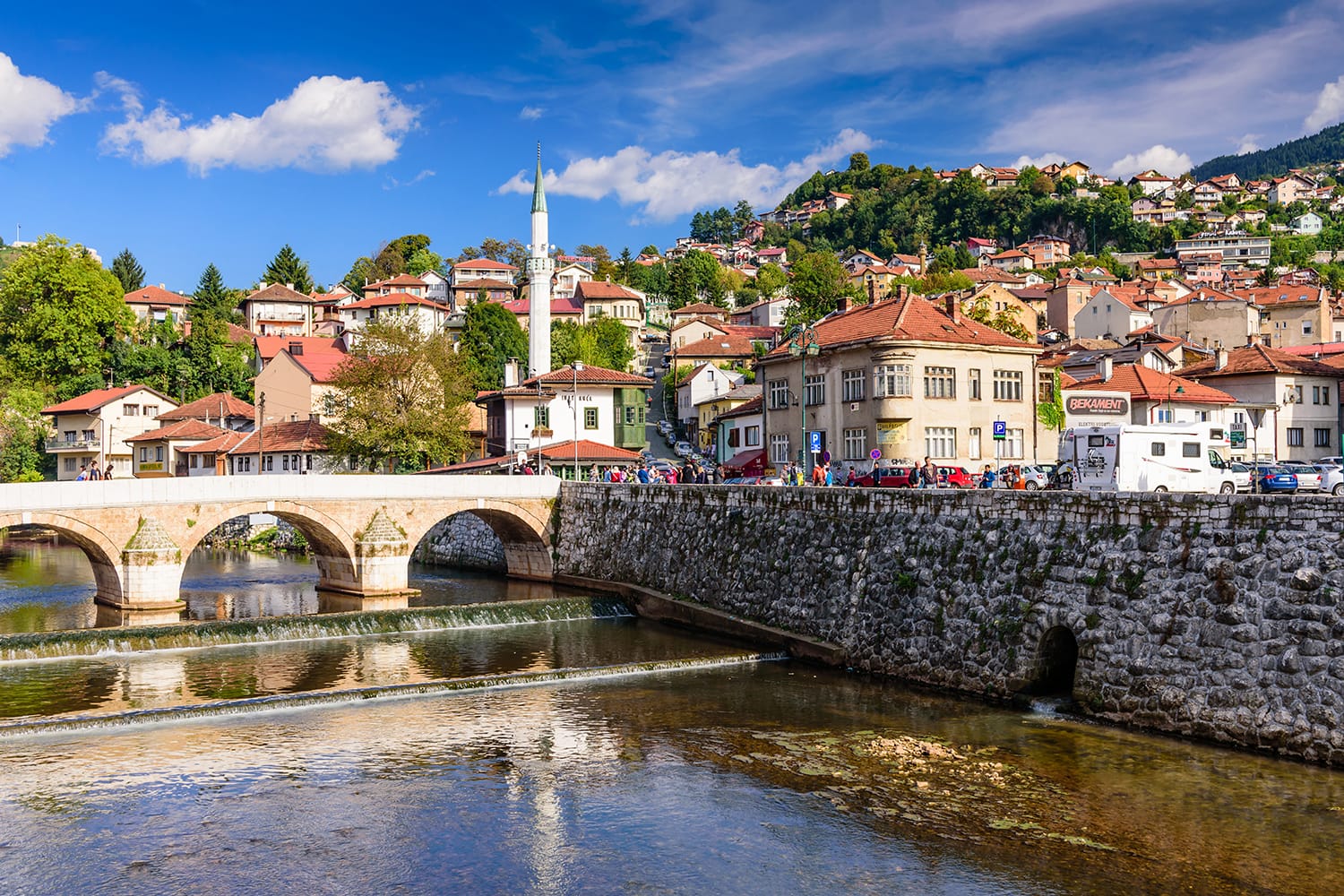
Bosnian Coffee and Baklava
While the food of Bosnia and Herzegovina is quite similar to that of other Balkan nations, two things strongly tied to the country are coffee and baklava. Both Bosnian coffee and the local baklava are similar to the styles you can find in Turkey, but they’re firmly part of life here, so seek them out if you need a break from sightseeing. While you have countless choices of where to get them in the Old Town, a convenient pick is Aksaraj, which you’ll find opposite the Baščaršija Mosque.
Kovači Cemetery
Visiting a cemetery as a tourist isn’t for everyone, as some see it as a sign of disrespect. But the Kovači Martyrs’ Memorial Cemetery shows that these places can be beautiful and important reminders of history.
With its sea of white pillar-shaped headstones, this cemetery is dedicated to those who died in the Bosnian War. It’s a stark reminder of how deadly this conflict was and how young so many of these people died. Be sure to pay your respects as you make your way through the cemetery to the hill, where you can reflect on the view back down over the cemetery and out to the city.
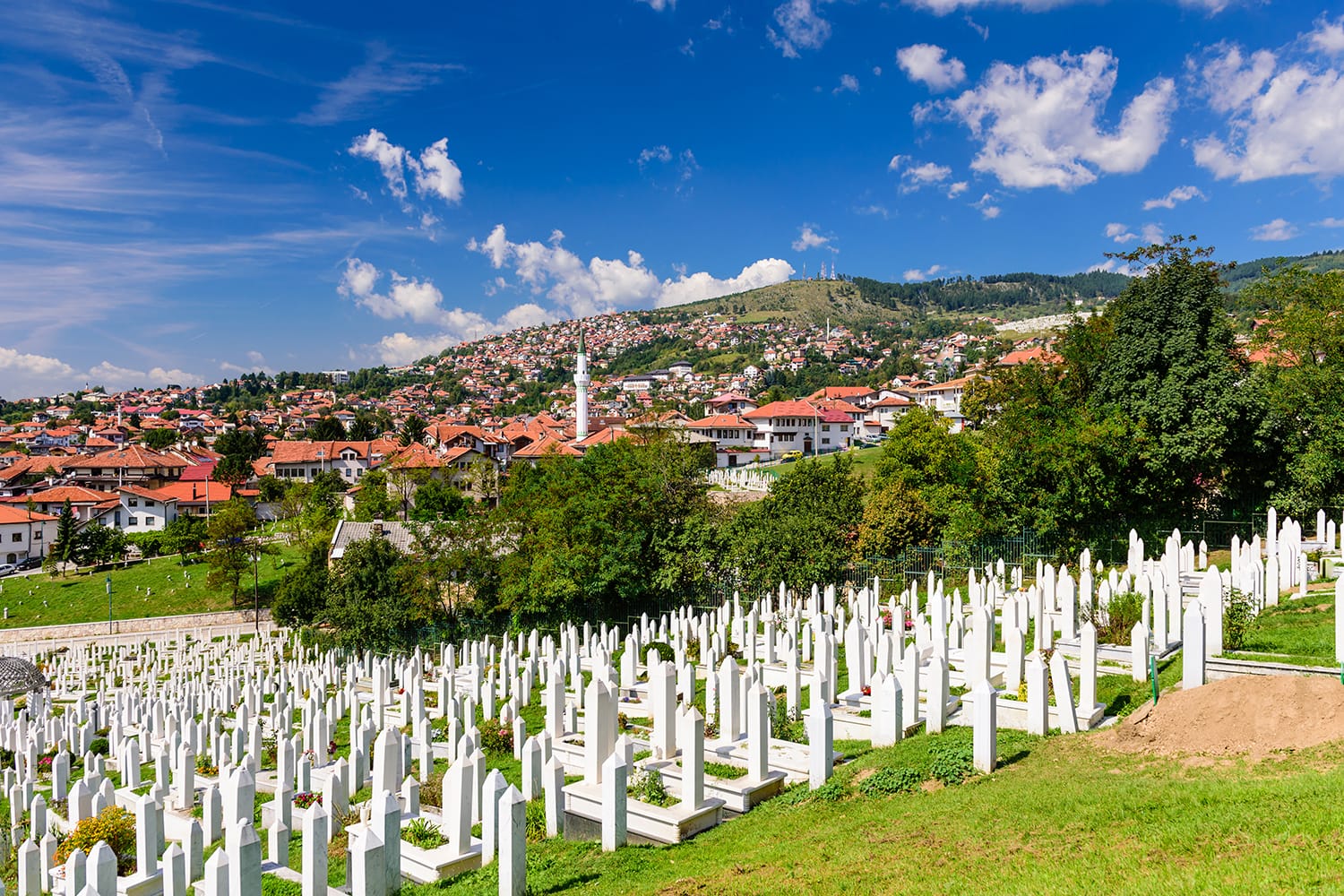
Yellow Fortress
For the best city view and a great sunset spot, you need to keep going up. From the top of the cemetery, follow the hill to the imposing walls of the Yellow Fortress. Overlooking the entire city, this 18th-century cannon fortress simply looks like a bunch of trees sitting atop high stone walls. Though it’s not that large or interesting on its own, you’ll want to find a spot amongst the locals perched on the walls and watch the sun set on your first day in Sarajevo.
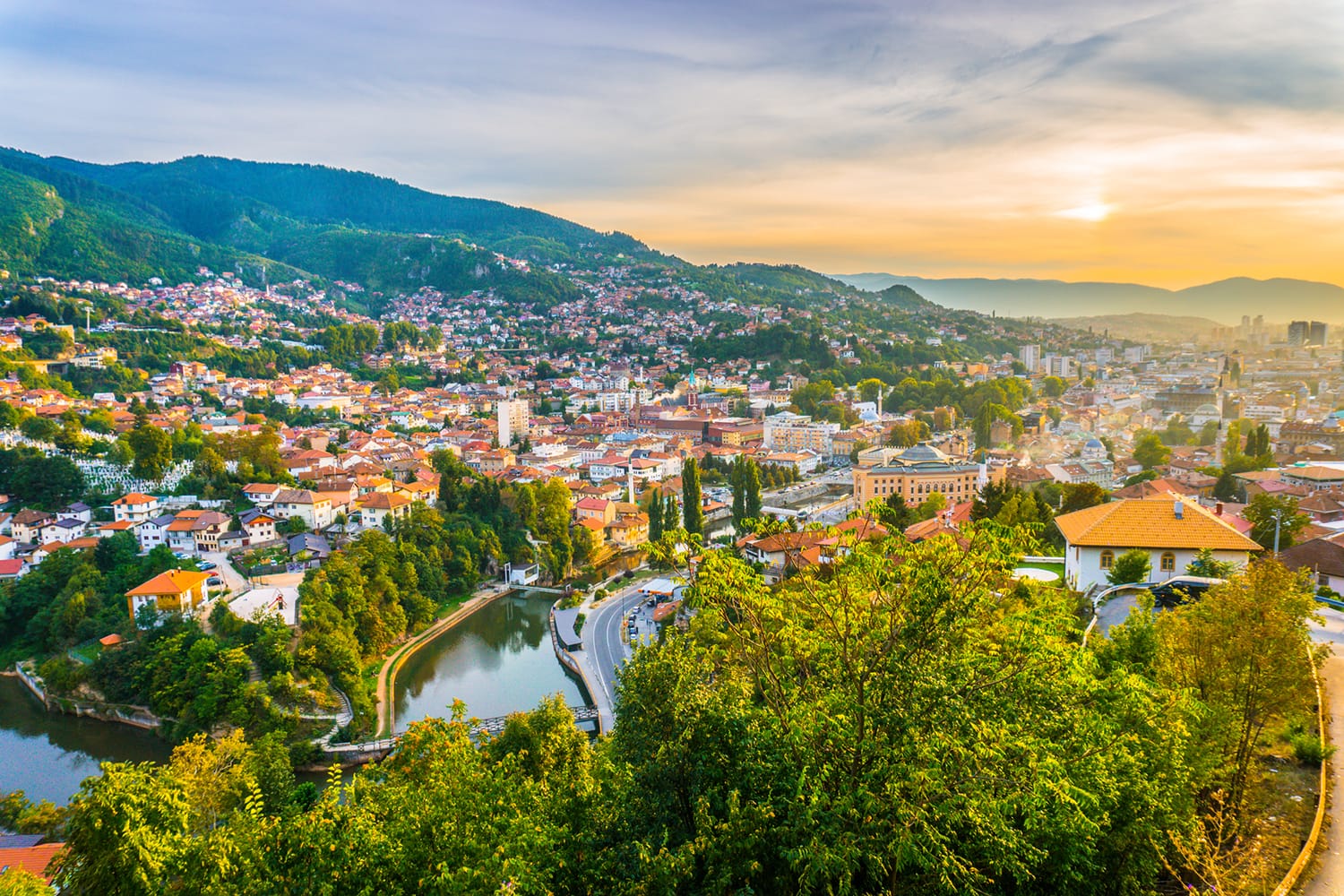
Sarajevo Itinerary: Day 2
For the second day, we’ll turn our attention to sites of Sarajevo’s recent past, though we’ll also briefly return to the Old Town.
War Tunnel Museum
To get a better sense of the events in Sarajevo during the Bosnian War, start your day with a visit to the Sarajevo Tunnel Museum. This small museum out past the airport sits at one end of a crucial tunnel constructed during the war. Also known as the Tunnel of Hope, it was the only access the besieged city of Sarajevo had to the rest of the world from 1993 to 1996.
In this private museum, you’ll find exhibits on the tunnel’s construction and why it was so necessary during the siege. On a guided tour, you’ll also learn about life during the siege and even visit a section of the meter-wide tunnel itself.
Recommendation: If you want to learn more about Sarajevo’s destruction and salvation, consider the Times of Misfortune tour. The tour is four hours long and takes you to all of the city’s key war sites, including the Sarajevo Tunnel Museum, Sniper Alley, Mount Trebević, the Old Jewish Cemetery, the Yellow Fortress, and the White Fortress.
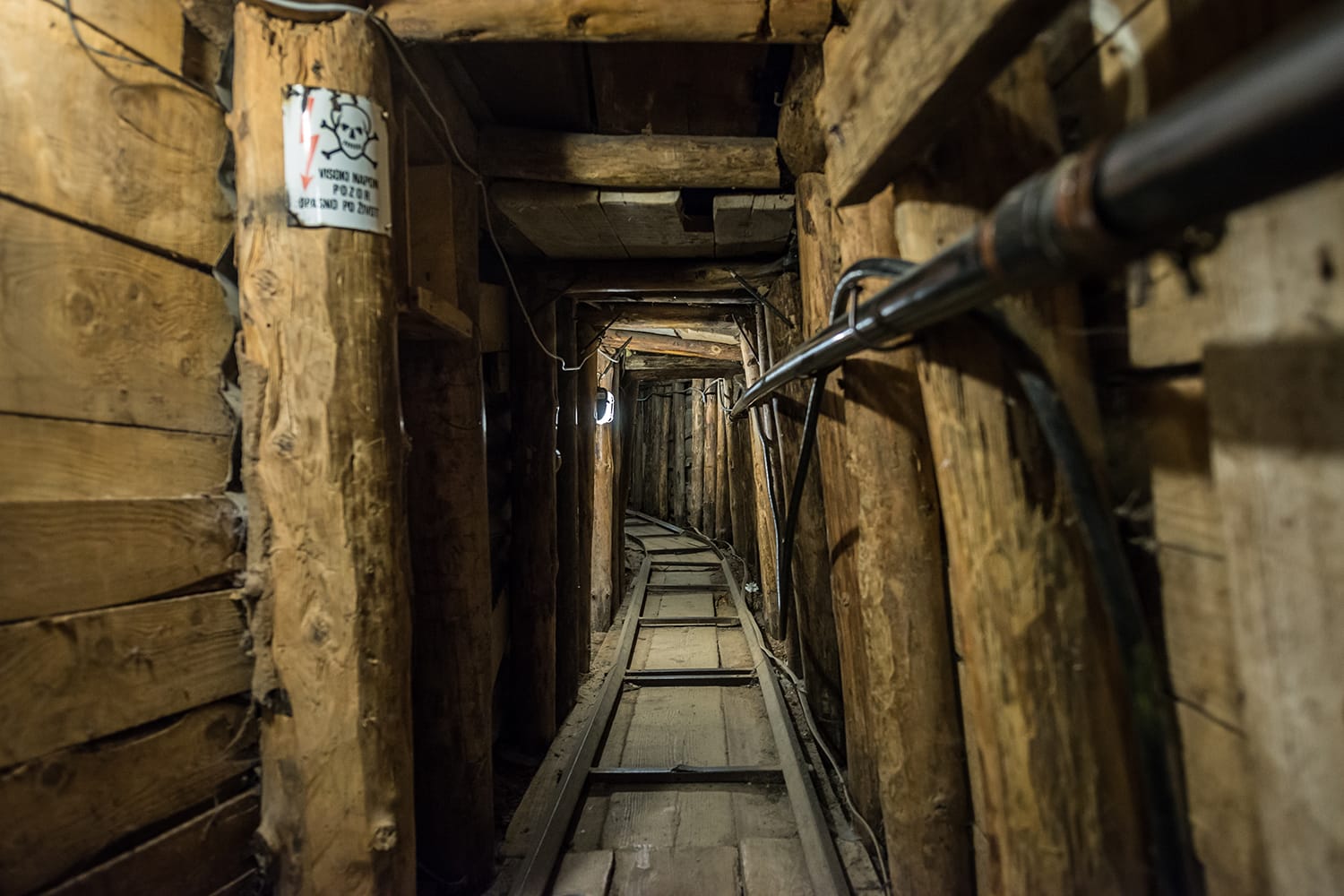
Scars of War
After you’ve learned about this period in Sarajevo’s history, it’s a good idea to walk around the city and allow the information to sink in. As you look up at the buildings around the city, you’ll soon spy bullet holes in their sides.
Many of these buildings’ facades have yet to be restored, particularly on the tenements outside the Old Town. While you wander, also look for Sarajevo Roses, patches of concrete where scars from mortar damage have been filled in with red resin. All of this is a grave reminder of how fresh the wounds are, but also how much Sarajevo has worked to move on from its past.
For a more direct approach to finding these reminders of the past, consider taking a themed walking tour. The tour will not only show you these spots, but also provide context and stories from this difficult period.
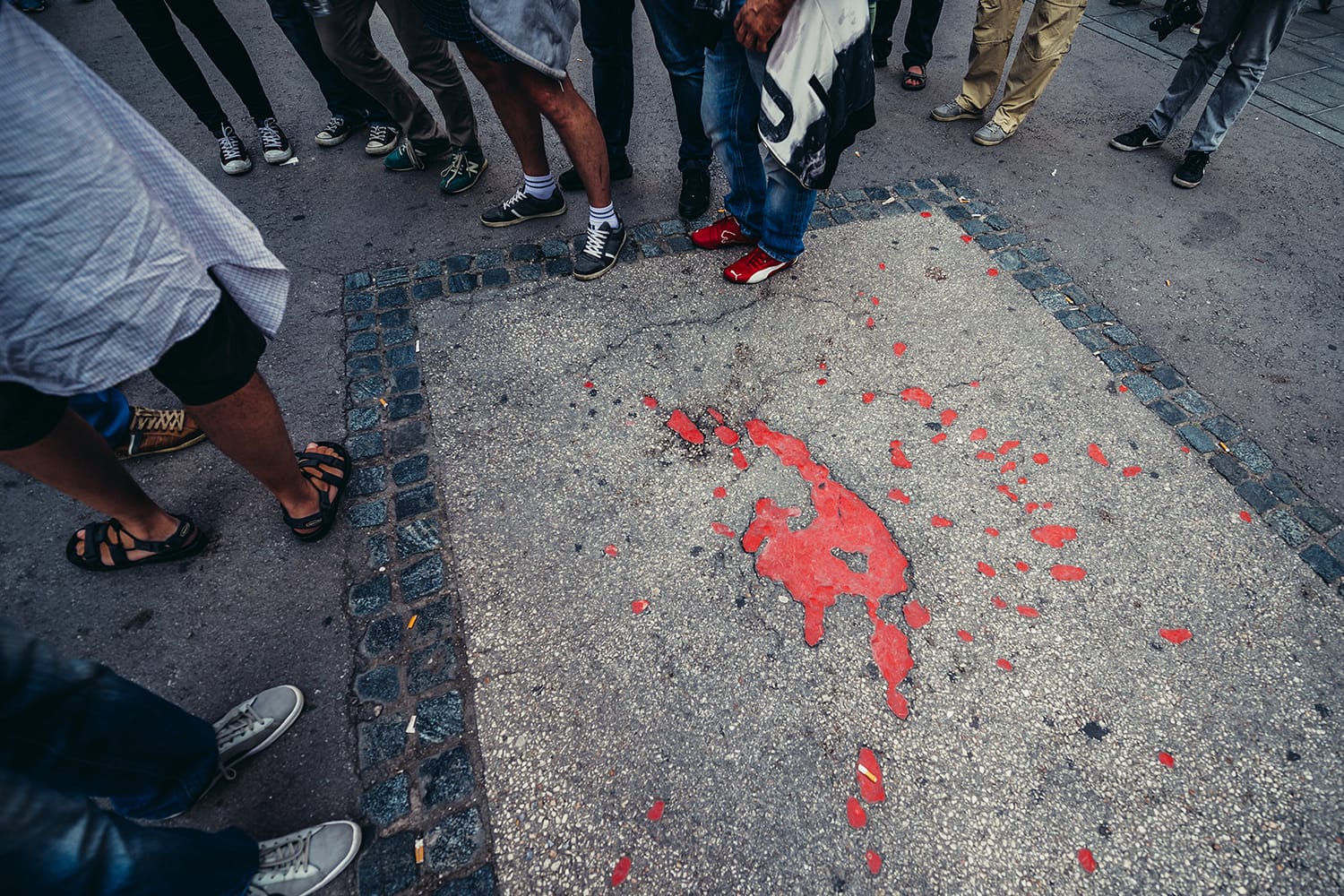
Avaz Twist Tower
Given its many historic landmarks, you might be wondering whether there’s anything new and modern about Sarajevo. That question is answered with the Avaz Twist Tower, a glass skyscraper built in 2008. Out near the newer parts of the city and the business district, the 176-meter twisted tower is a terrific contrast to the concrete brutalist architecture nearby. On the 36th floor of the tower, there’s an observation deck and a cafe from which you can take in the cityscape.
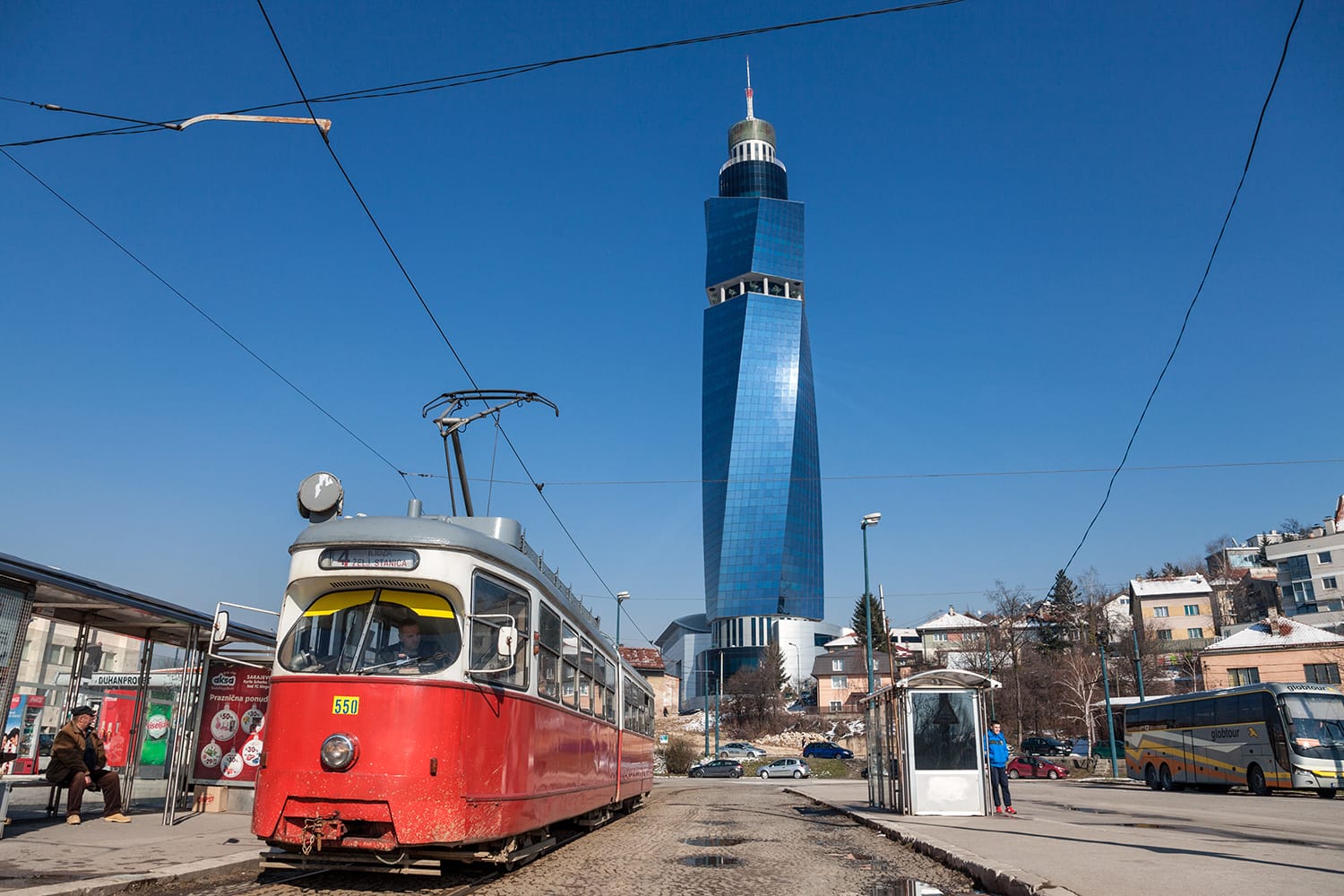
Eternal Flame
With so much focus on Sarajevo’s Ottoman period and the events of the 1990s, it’s important to remember that there’s much more to the city’s history. One good reminder of this is the Eternal Flame. This simple, touching memorial honors both the fighters and the civilian victims from when the Kingdom of Yugoslavia was invaded by the Axis powers in World War II.
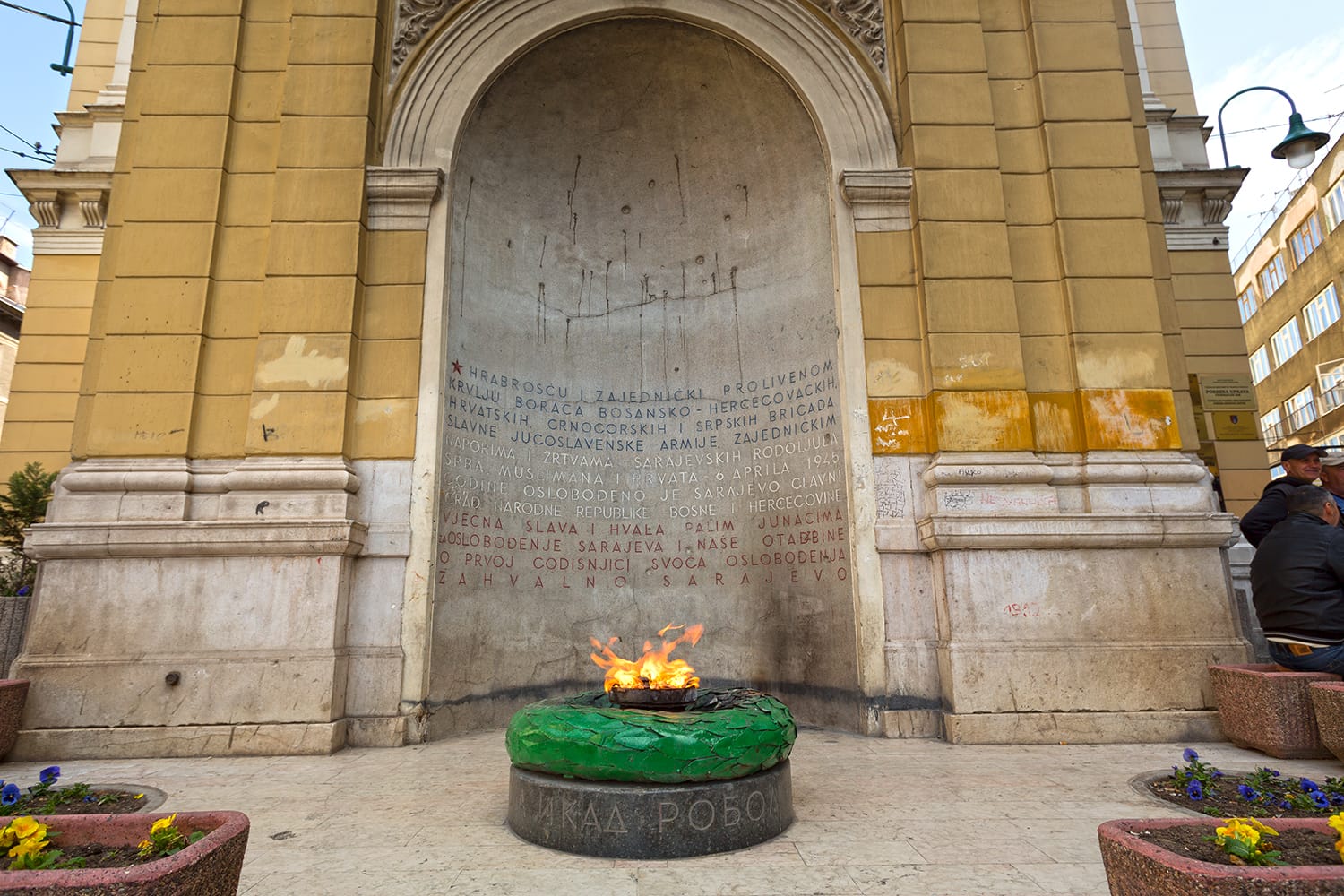
Churches of Sarajevo
Sarajevo is home to people of many religions, including Islam, Judaism, Catholicism, and Orthodox Christianity. It is this meeting of faiths and cultures that earned Sarajevo the nickname “Jerusalem of the Balkans.”
While we’ve visited a few of the city’s mosques, it’s vital to remember that Sarajevo is culturally and religiously complex, so let’s go find some churches too. The Catholic Sacred Heart Cathedral certainly stands out with its Gothic architecture. Also hard to miss in the city center is the Serbian Orthodox Cathedral Church of the Nativity of the Theotokos, which has an exquisite interior. You’ll find many more churches of various denominations along the streets north of the Old Town.
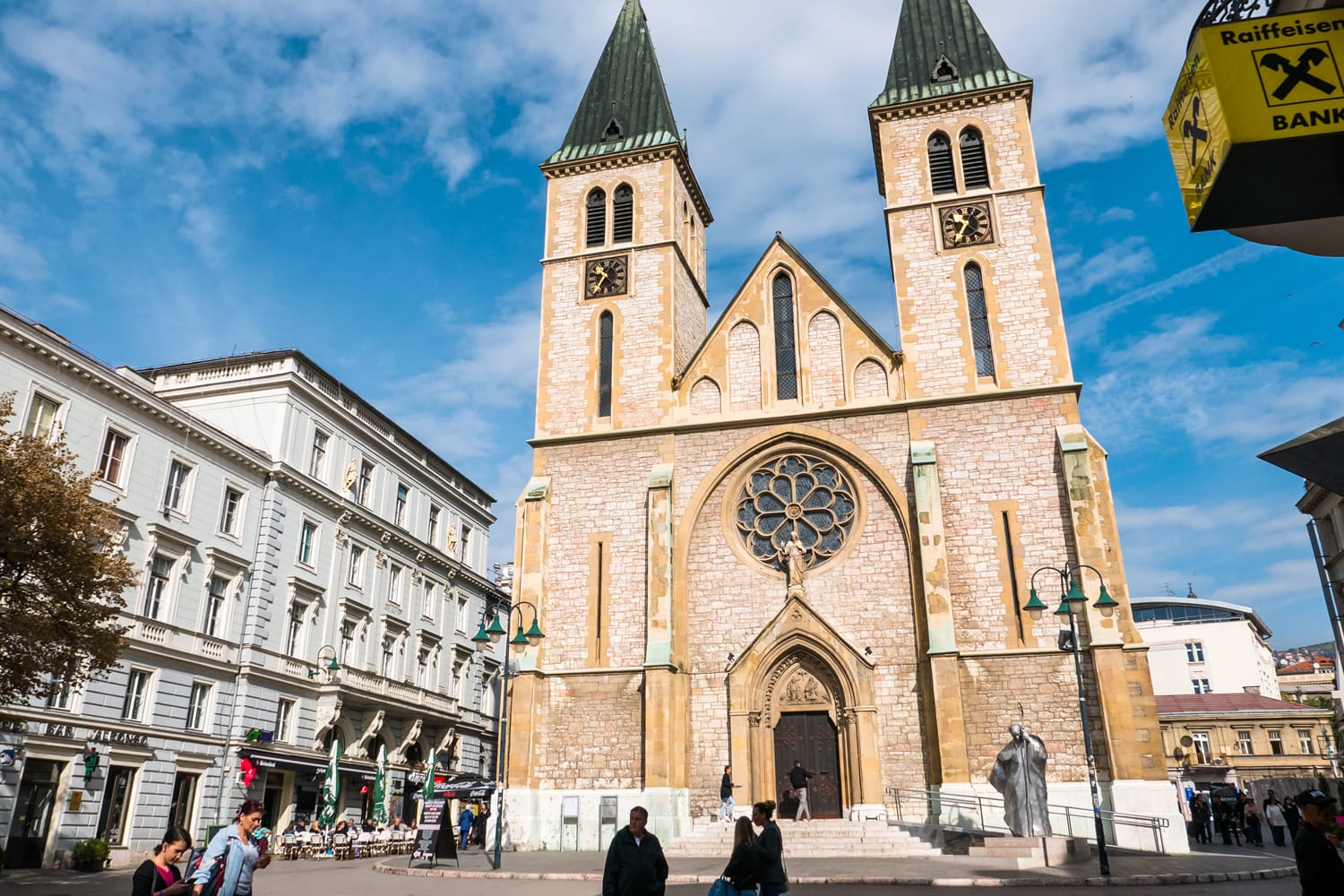
Vijećnica
Although you likely saw it as you walked along the riverfront on your first day, it’s time to pay the Vijećnicathe attention it deserves. Originally the Sarajevo City Hall, it became a monumental library after WWII, full of rare books and documents. Sadly, it suffered extensive and deliberate damage during the Bosnian War, but great effort has gone into restoring this gem of neo-Moorish architecture. It reopened in 2014 and is now the city council seat once again.
While the building’s striking exterior is hard to miss, it pays to venture inside as well. For 5 KM, you can see the elegantly painted interior and a splendid stained-glass ceiling that you wouldn’t expect.
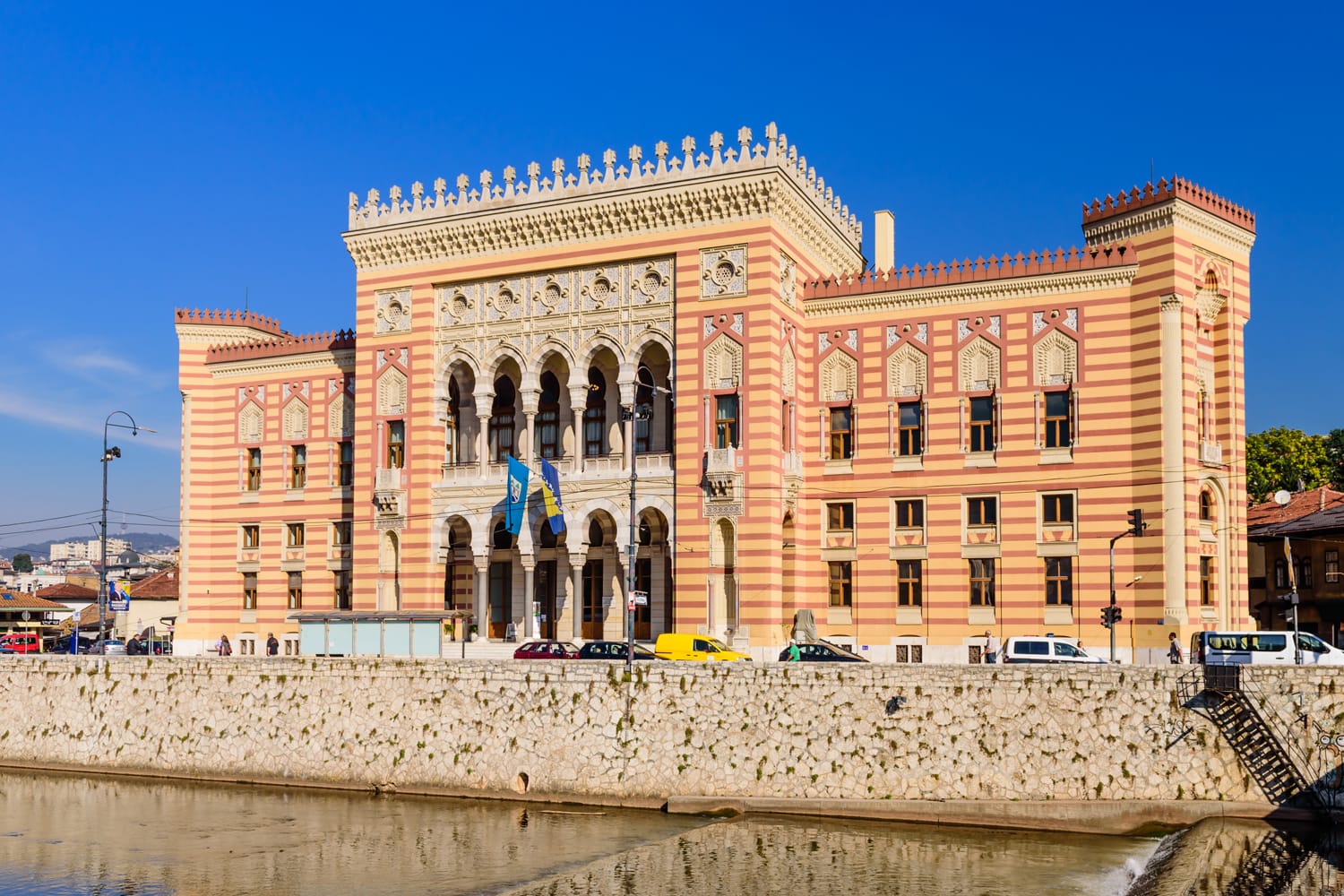
So ends our guide to exploring Sarajevo in two days. We hope you now have a much better idea of how to approach sightseeing in Sarajevo and come away from your visit wondering why it took you so long to go there. For other destination ideas in Bosnia and Herzegovina, check out our guide to the best day trips from Sarajevo and our Mostar itinerary.

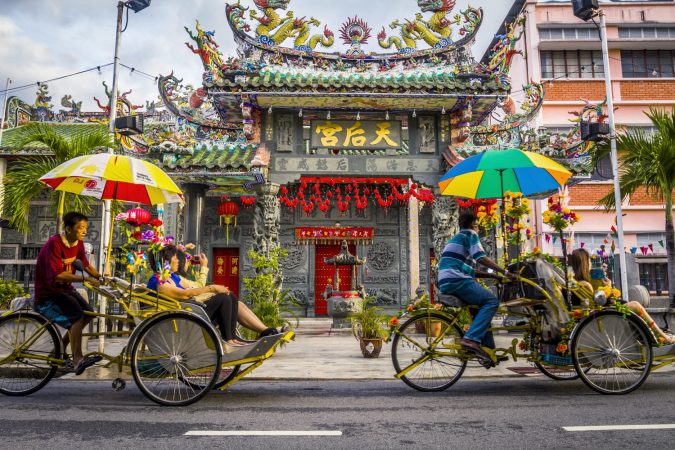
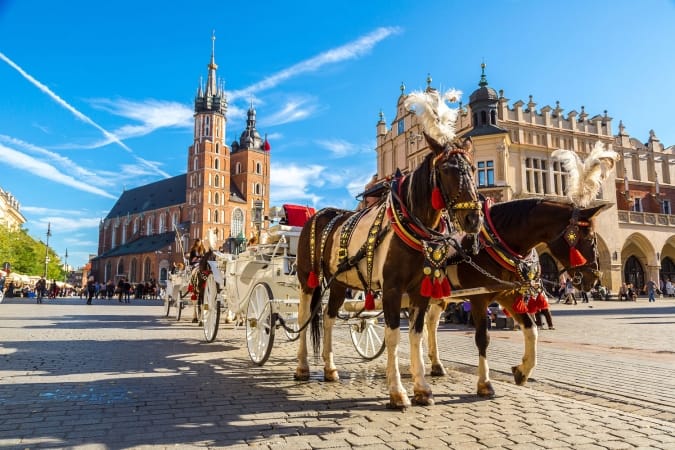
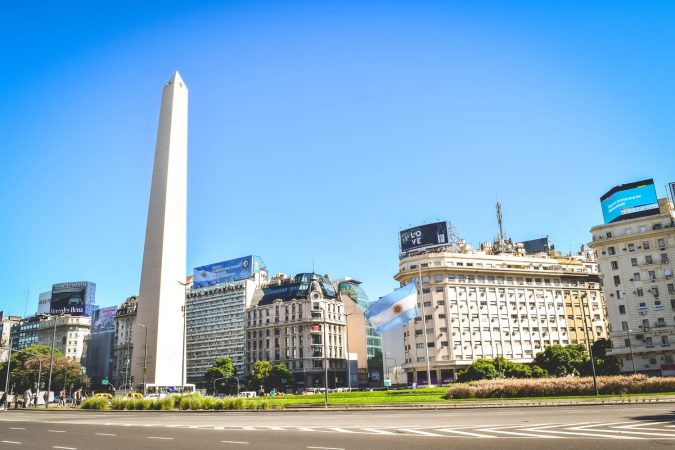

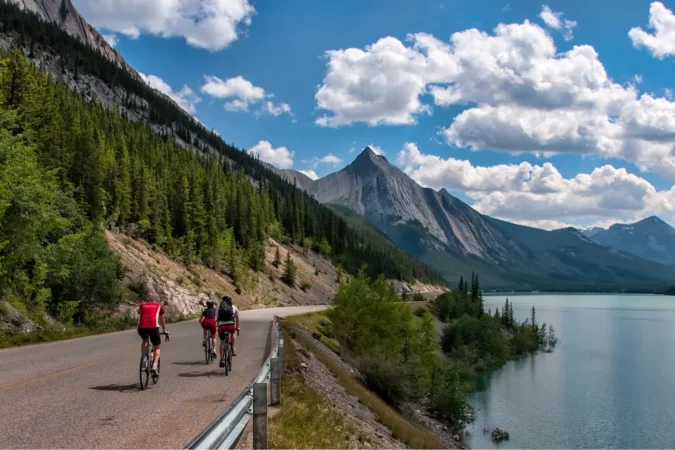

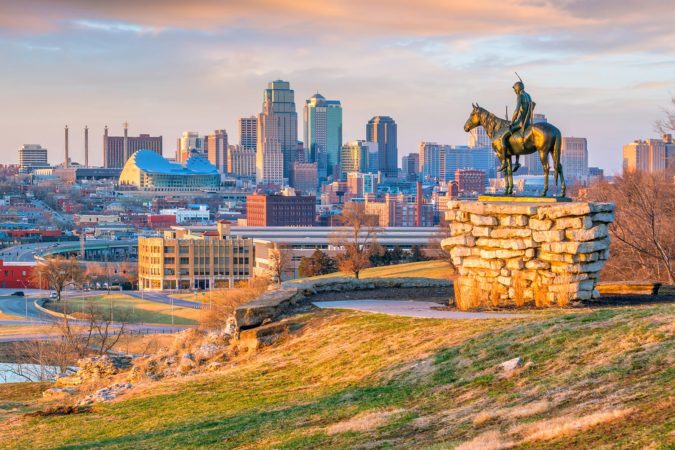
Comments